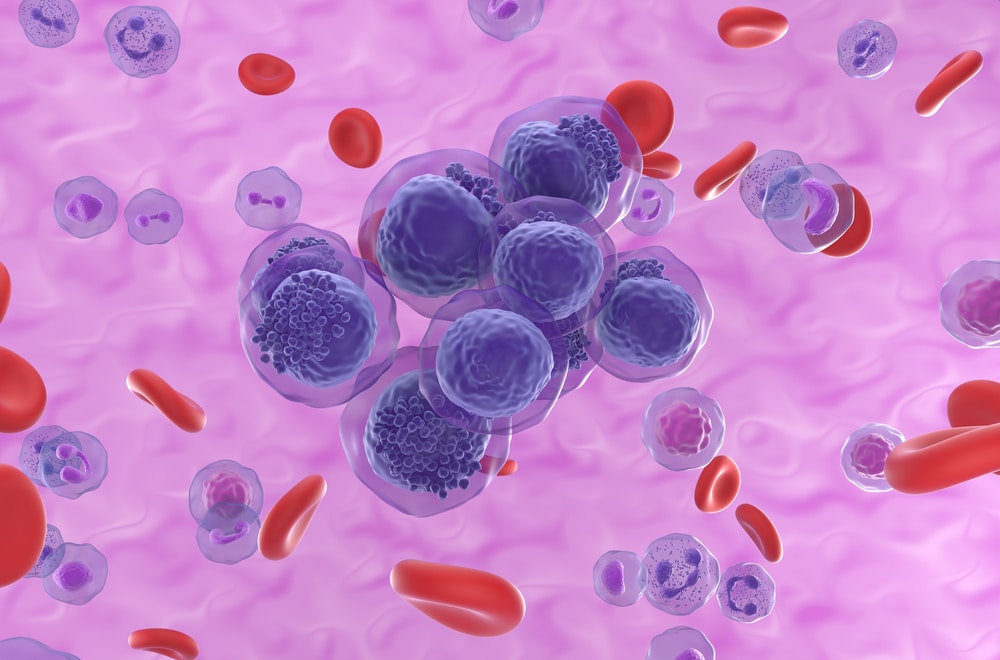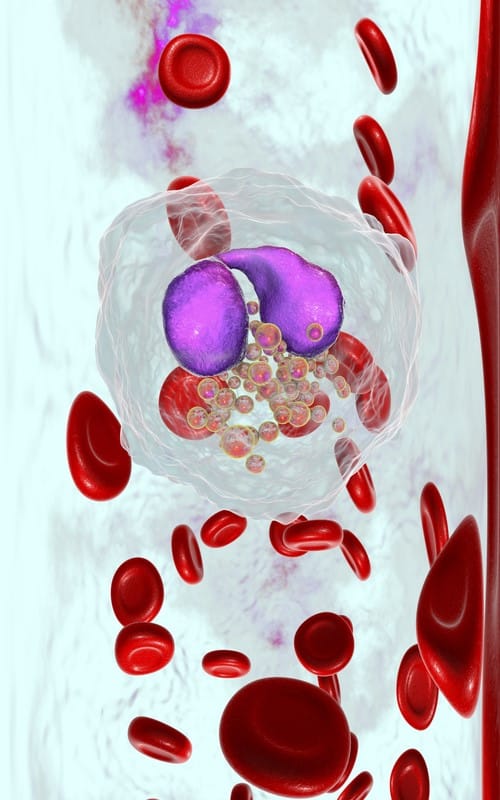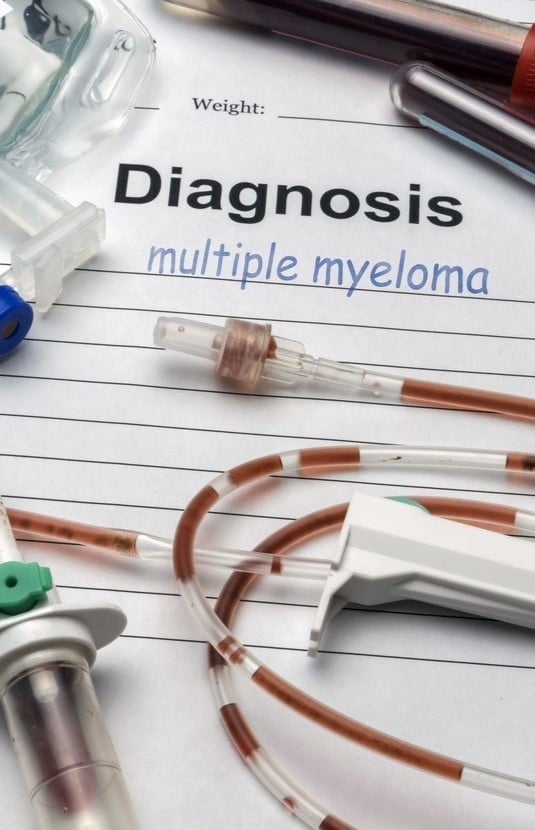Is Multiple Myeloma Relapse Treatable?
Relapsed Multiple Myeloma Treatment
Navigating the complexities of relapsed multiple myeloma requires understanding its nature, challenges and the advanced treatment options available. This disease, characterized by the malignant proliferation of plasma cells in the bone marrow, often shows a tendency to relapse even after initial treatment.
Recognizing the signs of relapse, understanding its frequency and impact on various organs, and being aware of the latest diagnostic and treatment methods are crucial for effective management.

What Is Considered a Relapse in Multiple Myeloma?
Increased Myeloma Markers
The reappearance or rise in specific markers in the blood or urine, such as monoclonal protein (M-protein), indicates increased activity by multiple myeloma cells. These markers are initially used to diagnose and monitor the disease’s progression and response to treatment.
Clinical Symptoms
The return or worsening of symptoms associated with multiple myeloma, such as bone pain, fatigue, or kidney dysfunction, can signal a relapse. This is particularly significant if these symptoms correlate with laboratory findings.
Radiologic Evidence
Imaging tests, such as X-rays, MRIs or PET scans, might show new or growing areas of bone disease or soft tissue plasmacytomas, which are indicative of relapse or progression.
Bone Marrow Biopsy Findings
A bone marrow biopsy may reveal an increased number of myeloma cells. This is a direct indication of the disease’s resurgence, as it shows an active proliferation of malignant plasma cells in the bone marrow.
Decreased Blood Counts
A drop in red or white blood cell counts or platelets, often referred to as cytopenias, can be a sign of relapsed multiple myeloma, especially if linked with other symptoms or test results.

How Often Does Multiple Myeloma Relapse?
Multiple myeloma has a notable propensity for relapse even after treatment. Relapse rates for this disease provide insight into its challenging and recurrent nature.
Short-Term Relapse
Approximately 16% of people with multiple myeloma experience a relapse within the first year following diagnosis and treatment.
Long-Term Trends
The likelihood of relapse increases significantly over time. After about four years from initial treatment, almost 66% of patients are reported to have experienced a relapse.
Average Time to Relapse
The median time to relapse for multiple myeloma is around 26 months.
Prognosis after Early Relapse
Individuals who relapse within the first 12 months post-treatment often face a poorer prognosis and lower survival rates compared to those who have longer periods of remission.
What Organs Does Multiple Myeloma Affect After a Relapse?
Multiple myeloma primarily affects the bone marrow but can also impact various organs and systems in the body, especially after a relapse. Some of the key organs and systems affected include:
Bones: One of the most common areas affected by multiple myeloma. The proliferation of myeloma cells in the bone marrow can lead to bone pain, lesions, and an increased risk of fractures. After a relapse, these symptoms can become more severe or widespread.
Kidneys: Renal impairment or failure is a significant concern in multiple myeloma, often due to the accumulation of abnormal proteins produced by myeloma cells. Kidney function can deteriorate further after a relapse, leading to complications like proteinuria (excess protein in urine) and elevated creatinine levels.
Blood System: Multiple myeloma can cause anemia (low red blood cell count), leukopenia (low white blood cell count) and thrombocytopenia (low platelet count). These conditions may worsen after a relapse, leading to increased fatigue, susceptibility to infections and bleeding tendencies.
Nervous System: Myeloma cells and related bone lesions can compress nerves, leading to neurological symptoms like numbness, tingling, or pain. Spinal cord compression is a serious complication that can occur, particularly after relapse.
Immune System: The disease and its treatment can weaken the immune system, making patients more susceptible to infections. After a relapse, this immunocompromised state can become more pronounced.
Soft Tissues: In some cases, extramedullary disease (myeloma cells growing outside the bone marrow) can occur, affecting soft tissues and organs like the liver, spleen and lymph nodes.
It’s important to note that the extent and severity of organ involvement in relapsed multiple myeloma can vary greatly among individuals. The disease’s impact is influenced by factors like the patient’s overall health, the aggressiveness of the cancer and the specific genetic characteristics of the myeloma cells.

What Are the Symptoms of Relapsed Multiple Myeloma?
Relapsed multiple myeloma can present with a range of symptoms, some of which may be similar to those experienced at the initial diagnosis, while others may be new or more severe. Common symptoms include:
Bone Pain
One of the most common symptoms, often caused by bone lesions or fractures. The pain is typically persistent and may worsen with movement.
Fatigue and Weakness
These are common due to anemia, a condition where there aren't enough healthy red blood cells to carry adequate oxygen to the body's tissues.
Frequent Infections
Due to the weakened immune system, patients may experience more frequent bacterial or viral infections.
Kidney Problems
Symptoms like reduced urine output, swelling in legs, or changes in urine color can indicate kidney issues caused by the accumulation of myeloma proteins.
High Calcium Levels
Elevated calcium levels due to bone breakdown can lead to excessive thirst, frequent urination, constipation, nausea or confusion.
Nerve Damage
Symptoms such as numbness, tingling, or burning sensations, particularly in the legs and lower back, can occur due to nerve damage caused by myeloma cells.
Weight Loss and Loss of Appetite
These can be signs of the general progression of the disease.
Shortness of Breath
This can be due to anemia or kidney problems, leading to fluid buildup in the lungs.
How Is Relapsed Multiple Myeloma Diagnosed?
Clinical Evaluation
This involves a thorough assessment of the patient’s symptoms, medical history, and a physical examination. The doctor will look for signs of disease progression, such as new or worsening bone pain, fatigue or symptoms of kidney dysfunction.
Laboratory Tests
Blood and urine tests are essential in diagnosing a relapse.
Imaging Studies
Imaging tests help in detecting bone damage or lesions caused by myeloma cells.
Bone Marrow Biopsy
A biopsy, often from the pelvic bone, is performed to assess the percentage of myeloma cells in the bone marrow. This can confirm a diagnosis of relapse and provide information on the aggressiveness of the disease.
Genetic Testing
Analyzing myeloma cells for genetic abnormalities can help in determining the prognosis and guiding treatment choices.

Why Should You Choose Sheba Medical Center for Relapsed Multiple Myeloma Treatment?
Advanced Treatment
Sheba Medical Center is renowned for its pioneering treatments, including the use of CAR T-cell therapy for multiple myeloma. The center’s commitment to innovation means patients have access to the latest therapies and clinical trials, often unavailable elsewhere.
Quality of Care
Sheba Medical Center is recognized for its comprehensive and patient-centered approach. The center offers a multidisciplinary team of specialists, including oncologists, hematologists, radiologists, and supportive care experts, ensuring all aspects of a patient’s condition are addressed.
Cost Considerations
While offering cutting-edge treatments, Sheba Medical Center is also known for its cost-effective care. The center provides high quality medical services at competitive rates compared to other leading hospitals globally.

The Benefits of Getting Relapsed Multiple Myeloma Treatment at Sheba Medical Center
Sheba Medical Center offers a range of benefits for patients undergoing treatment for relapsed multiple myeloma, highlighted by its advanced medical practices and patient-centric approach. Key benefits include:
In-House CAR T-Cell Engineering
A standout feature of Sheba Medical Center is its in-house engineering of CAR T-cells. This not only streamlines the treatment process, reducing the time from collection to delivery to about 10 days, but also ensures a high degree of customization and adaptability to individual patient needs.
Expert Medical Team
Sheba Medical Center boasts a team of experts across various specialties, including oncologists, hematologists, and supportive care professionals. This multidisciplinary team ensures comprehensive care, from diagnosis to treatment and follow-up, incorporating the latest medical advances.
Research and Innovation
Sheba Medical Center is at the forefront of medical research and innovation, particularly in the field of hematology and oncology. Access to cutting-edge research and participation in clinical trials offers patients the most advanced treatment options available.
International Recognition
The center is globally recognized for its high standards of medical care, innovative treatments, and contributions to medical research. This reputation assures patients that they are receiving world-class care when being treated for multiple myeloma.
Request a consultation
Sheba Medical Center provides innovative, personalized medical care to patients from around the world. We are the largest, most comprehensive hospital in the Middle East and dedicated to providing advanced and compassionate medicine for everyone.
We welcome all cases, including the rarest and the most challenging. Our medical teams collaborate to provide the best possible health outcomes. From your initial inquiry through the long-term follow-up care, we are here for you.
Request a consultation and a Sheba Case Manager will contact you shortly:
